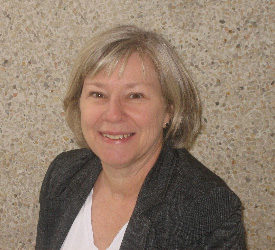 |
| Prof. Marilyn J. Smith Director of Georgia Tech's Vertical Lift Research Center of Excellence |
Today's students of vertical lift technology can look forward to robust career opportunities in the next decade, if our educational and training rises to meet the demand for cutting-edge innovations in vertical take-off and lift (VTOL) vehicles.
That was one of the conclusions reached by expert panelists, including Georgia Tech Aerospace Engineering professor Marilyn Smith, during Agility Prime, an online conference sponsored by the United States Air Force, April 27- May 1. Smith, the director of Georgia Tech's Vertical Lift Research Center of Excellence (VLRCOE) was one of the lead panelists in a discussion entitled "Community Engagement: Introducing this Technology and Benefits to the Public.
View a video of the panel here (1:46:35).
Citing the public's burgeoning interest in unmanned aerial vehicles (UAVs) and urban air mobility - the use of specially designed aircraft to meet the routine, local, transportation needs of densely populated urban areas - Smith urged industry and academic colleagues to work with all three of the nation's vertical lift centers to expand opportunities for tomorrow's engineers.
"We believe it is cost-effective to build upon the VLRCOE infrastructure - both the centers and our partners - and there's no reason that other universities can't join in with their specialties," she said. She suggested collaboration on specific areas of critical need:
- Introducing new courses that cater to the demands of VTOL and eVTOL technology
- Developing more VTOL certificate and professional education programs that will help current engineers to retool their skills and knowledge of this rapidly changing field;
- Increasing co-op and internships for engineering students in the VTOL industry and for the industry to benefit from more cutting-edge research;
- Developing incentives to attract young people to specialize in VTOL
- Developing shared graduate and professional education services.
- Additional graduate research funding.
- Expanded opportunities for distance learning and online education to accommodate the further education of working engineers.
Smith's observations were welcomed by Vertical Flight Society executive director Mike Hirschberg, the panel's moderator:
"We need a national VTOL strategy for the workforce," he said. "In the next decade, we will need an additional 10,000 engineers...that's 1,000 engineers a year to meet the civil and military need."